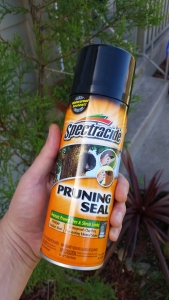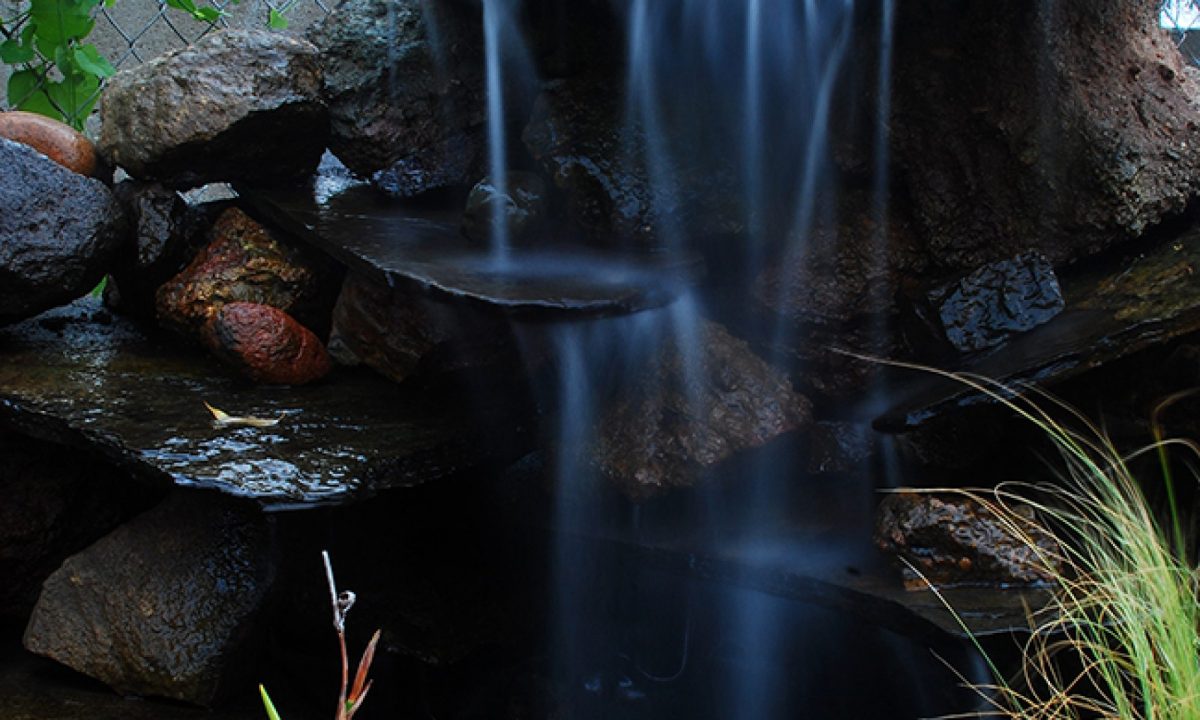Ever since I began my journey studying the art of bonsai, I have been obsessed with harmonious tree patterns. How the branches relate to each other, the shape of the trunk and the root flair (or nebari in bonsai circles) as well as the silhouette of the tree as a whole are all fascinating to me. When working with bonsai, we are always trying to exaggerate these traits to make the tree appear as majestic as its full sized versions. Many of the techniques and designs used on bonsai can also translate into a full sized tree. Now whenever I plant a tree, I can’t help but think about what branches will be dominant, what will be pruned and how I want to tree to grow. My days of just planting and letting nature take over are long gone.
The coastal coral on my front lawn was no exception to this rule. I want a lovely specimen tree to welcome guests and be the envy of the block. I’ve spent the last year observing it and planning my attack. Sometimes I would just stand on the lawn and stare and think. Much to the chagrin of passers by.
Then, a reader of mine taught me something about the Erythrina caffra tree that I didn’t know. They left a comment on my post about my coastal coral tree regarding the clustering of branches on this tree and how they could actually push weaker branches to the point of breaking off. Now as I was already planning on doing some pruning on this tree to help with the trunk and lower branch development anyways, this comment just proved to rekindle that desire.
Pruning trees is a great winter project. Getting all the design elements dialed in before the sugars in the roots push up new growth in the late Winter/early Spring is key to putting as little stress on the tree as well as not wasting all that new growth in areas which you will cut off anyways. I believe this to be true of most woody plants.
This was the branch that was bugging me the most. It just didn’t feel right and the crown was lacking movement and a proper feng shui…


There was also another smaller branch that I removed to make for a better branch development…
In the image above, you can see where the branch was (marked with red dotted line). The area in green highlights how the shape of the branching is now more harmonious with a much more interesting shape to it. Here’s a detail of the branch…
Isn’t that much nicer? Like an outstretched hand. Now as the tree begins to thicken up, this will really create some lovely branching. Now it was on to the next, much larger branch. This one is a bit more tricky because it’s right at the top of the trunk and is sandwiched between the other three. I would have to make a few cuts to get this right.

This branch will make a perfect new potted tree! It already has some good branching as well as a thick trunk. I will use this to make a future bonsai which was my initial intention for the main tree. To learn more about cutting propagation with the coastal coral, check out this article! But I mustn’t get ahead of myself! I have this ugly cut to deal with on my tree!

If left as is, two things will happen. Firstly, the base of the crown, or top of the trunk, will always have a kind of lumpy look to it. It will need to be shaped a bit better to make a smoother transition between the remaining three branches.

That should do nicely! Eventually the three remaining branches will grow together and cover this scar completely.
The second thing to consider is that the tree could lose quite a bit of moisture from such a large wound! It may also be susceptible to infection and may actually rot to the point of killing the tree. However, I should mention that this is indeed debatable. Some science is now showing that the trees natural behavior doesn’t necessitate using pruning sealant and it can actually cause more harm than good. After all, in nature no one is sealing any wounds.
I’m on the fence about it. I do use it for bonsai when I make larger branch cuts. I’m more convinced that the plant looses moisture than I am of its susceptibility to infection. Especially because most tree pruning is done during the late fall/early winter when it’s too cold for bacteria or insects. Check out this article for an argument against prune sealer. I’ve had times where no wound sealant has caused issues and I’ve had times where it hasn’t done any damage at all. You see trees don’t actually heal like you or I do. They just grow their bark over the spot where the wound is over time.
I’m curious as to what my readers do about tree pruning. Do you leave it be or seal it up? Let me know…
[polldaddy poll=8579256]
I decided to go ahead and seal this one because it was such a large cut. Time will tell if it was needed or not. Here’s the product I used. I do have some concerns about the black color causing some additional temperature issues and will monitor it for any issues that I can see. In time the branches will grow so thick that this wound will be covered completely.

This Spectracide is not the most organic product on the market, but I used such a small amount and once it cures it shouldn’t cause any harm. Here’s what it looks like right after I sprayed it.

I’m giving some serious thought to doing a nice faux finish over it once it cures. I do a lot of that at the museum for object mounts and I’m a bit of a wizard if I do say so myself. It’ll make it look more natural, but more so it would solve the temperature issues I’m concerned with. I can see the looks on the neighbors faces now as I go at this tree with some artist brushes and a palette. So it goes.

And here’s a little before and after shot. I know, how scientifically illustrated! You should know that I spare no expense when it comes providing only the finest of illustrations for my loving readers! I even magically turned my dog into a tree branch! Such wonders. I digress.

So now I can really begin to see what my mature tree will look like when it’s all grown up. I’m also making some back of the mind preparations for a possible future tree house. And what a perfect start I have now with that lovely crown taking shape. You can almost picture it tucked away in there. No girls allowed in the tree house of course, unless they can provide proof of no cooties!






It really does look beautiful.
Very nice indeed. Even the dog looks suitably impressed with the prunings 🙂
Thanks Matt! And thanks for the coastal coral tips too! What are your thoughts about using pruning sealer?
For me, being in a cool, damp climate I wouldn’t use the sealant – It’s like leaving a Band-Aid/sticking plaster on too long and your skin going all soggy because of the moisture.
The only real problem I see with tree paint is if there is any moisture or a pathogen inadvertently in the wound, it actually gets sealed in, and it can’t get out, which could make the matter worse.
But in a dry climate like SoCal, I don’t think there would be any harm, especially with winter pruning when the tree will be slower to re-grow its protective bark.
I have a corral tree in the front yard of the house we just bought in North Orange County. The tree is mature, but sadly looks so ugly because of the lack of leaves. There’s barely any- (just yellow clumps that fall off quickly), and a few flowers that fall quickly as well. I’m wondering if the tree isn’t getting enough water, or if this is just part of the tree’s natural process? Your pictures of the tree look gorgeous and green! Any advice would be great! Thanks!
Hi Amber. While the coral tree does have times when the leaves drop to make room for the winter blooms, it should still have full green leaves right now. I’ve seen some specimens that don’t leaf as much as most though. But not as bad as what you’re describing.
What is the watering situation now (I. E. How much, how often)? Also, what’s surrounding the tree? Is it grass or rock or the like?
My initial thoughts involve fertilizer issues. A lack of nitrogen specifically. But give me the details mentioned above before doing anything.
For mine, I have the lawn irrigation as the only source for water. Once established, the coral tree doesn’t really need much irrigation beyond natural rainfall. The last six years of drought change that scenario a bit, but this last winter was wet enough to make me think that water is not the cause.
If it is nitrogen deficiency, then now is the time to fertilize for sure. Make sure the fertilizer you get is high in nitrogen. I’ll always recommend an organic fertilizer. So for your needs, I’d add blood meal to the soil. Around the base of the drip line, which is the circle made underneath the edges of the canopy. Well, not “canopy” for you with no leaves 🙁
I’d add it to the first few inches of soil and give it a good soaking to let it seep down. A layer of mulch on top of that and you should see new leaf growth within a couple weeks.
Do me a favor, snap a few photos of the entire tree and the surrounding ground as well as detail shots of the soil surface and some of the branch ends or any newer green growth at the tips of the branches. Email those to me and let me know the answers to the above questions. From there we’ll come up with a plan that’ll bring your tree back into action.
I’M trying to find out if it is advisable to prune my mature coral tree in December. The tree is in Orange, California.
trrovz@gmail.com
Thank you
Hi James,
I have two Bonzai cafes trees, the younger one propergated from a cutting from the elder one which is about 15 to 18 years old.
I’ve never had success with either of them flowering so I wonder if you could assist with some pointers to promote flowering?
They both live out doors and are regularly watered and fertilized(nitrogen based liquid feed). I live in a windy area of Cape Town but both are in protected areas receiving ~6hrs of direct sun each day.
Any ideas?
Thanks
Ivor
Good morning Ivor, or, good evening for you in Cape Town! Are you referring to the erythrina caffra tree here? If so, there are two issues that come to mind regarding the lack of flowers you’re receiving. First and foremost, look to your fertilizer. If there is too much nitrogen in it, it will feed new leaf growth at the peril of flowers (or fruits in other trees). You want higher potassium than nitrogen. That’s the last number of the three and is often indicated with a “K” as that is it’s periodic element designation. Basically, this is what to think of when choosing fertilizers:
Nitrogen (N): Promotes healthy foliage
Phosphorus or Phosphate (P): Stimulates root systems
Potassium or Potash (K): Aids in flower (and fruit) formation
If you are referring to the coastal coral tree, there is another possible culprit here. Some corals just don’t really flower that much. same species, but it’s just not in their genes nonetheless. Others will be heavily laden with flowers every year. I mention this in another article about propagation under a section called “selecting a good host tree”. Take a look here…
https://mindyourdirt.com/2015/08/15/how-to-propagate-a-coastal-coral-tree-erythrina-caffra/
If the former is the case, it’s an easy fix. If it’s the latter, there’s not much you can do apart from getting a more flowery host tree and starting over. Which isn’t the end of the world as they tend to be a rather fast growing tree. Obviously, you’d have to go hunting for a source tree during the flowering season (late winter for me in San Diego) so you know what you’re getting.
I hope this helps!
Yours,
James
My coral tree has been in a wine vat for at least 15 years, does well, but doesn’t flower much. I’m thinking of removing it from the vat as it is very root bound, cutting some of the roots and repottting it again in the vat. It may have rooted some through the bottom of the barrel, but not alot.
Hopefully, I won’t kill it, but maybe with proper pruning it will flourish with beautiful flowers.
Any hints you have for me as to maintaining my dear tree will be truly aqppreciated.as it looks so pretty in my court yard.
Hi Connie. I’m trying to get an image of what you’re dealing with here. When you say wine vat, do you mean a wooden wine barrel? How tall is this tree?
Did I lose you Connie? I’m still itching to help over here!
Sorry I lost touch with you, but I have had some health issues and now I’m back to my beautiful coral tree.
It is in a wooden wine barrel and the roots have grown out through the sides. I’m concerned that the roots will grow through the patio bricks. Can those roots be chopped without injuring the tree and kept in a larger vat or pot indefinely? If put into the ground the roots will grow all over the place and I don’t want that because my area is not that big. It looks lovely in the barrel. How long can it be kept contained as such?
Dont apply ANY sealants or external material to pruning cuts. inhibits proper compartmentalization of decay. Just avoid at all costs. Trees have developed sealing techniques over hundreds of millions of years. Best to leave the process to the experts.. the trees themselves!
Agreed! I abandoned sealants almost immediately. Proud to say that this particular coastal coral is thriving as of today! But I never skip that winter pruning. She’s a needy species.
My tree is in Orange, California. How can i find out if it is advisable to prune my mature coral tree in December